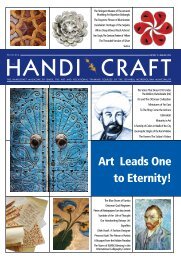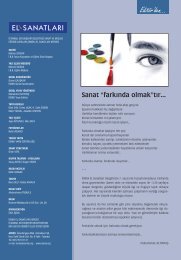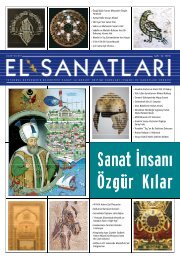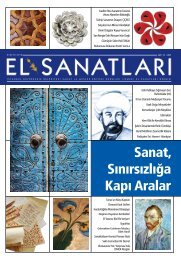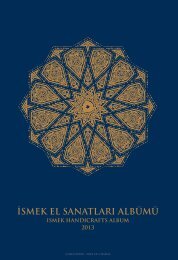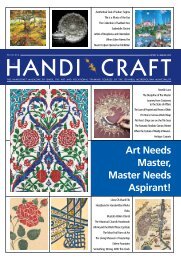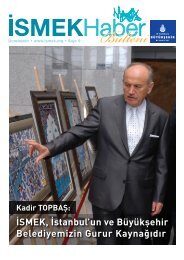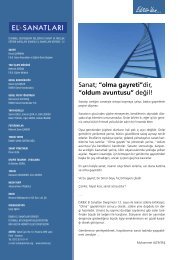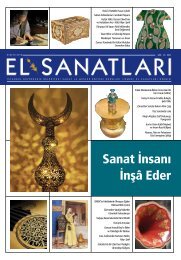Download Link - Ä°SMEK
Download Link - Ä°SMEK
Download Link - Ä°SMEK
You also want an ePaper? Increase the reach of your titles
YUMPU automatically turns print PDFs into web optimized ePapers that Google loves.
Measured calligraphic exercise of the prayer ‘’Rabbi yessir ve lâ tuassir Rabbi temmim bi’l hayr in Nesih Calligraphy (Calligraphy, Ömer Faruk Dere)<br />
Islam calligraphy has already reached the effect of being<br />
plastic centuries before which the west art is trying to reach<br />
today. As it is known there are four main plastic elements in<br />
the painting art. Dot, line, stain, and colour. The calligrapher<br />
has been making works with the love of the religious values<br />
by using dot, line, stain, and the connection between them<br />
without depending on outside world as in painting and needind<br />
even colour. Today modern arts trying to break away the<br />
external world dependence admire the plastic strength of<br />
the calligraphy art. The calligraphy art uses the plastic elements<br />
skillfully with the aim of serving high purposes compared<br />
with the meaningless and futile plastic works made in<br />
the name of modern art. The subject of this short text will be<br />
the ‘’stain’’ that comes firstly in the plastic values of calligraphy<br />
art. Calligraphy art consists of the balanced distribution<br />
of the stain harmonies being formed of lines on the defined<br />
surface. The spaces which give us sometimes joy, sometimes<br />
peace,sometimes tranquility are the stain left. The Great Calligraphy<br />
Sami Efendi wanted to tell this while he was saying<br />
‘’I enjoy the spaces in calligraphy’’.<br />
The artist looks fort he divine balance existing in the whole<br />
universe in the distribution of the stains on the space.This<br />
balance is not formed with mathematical operations. It is put<br />
down completely with the driving of spiritual (sevk-i ilahi). The<br />
calligrapher uses the balance in his work as the most important<br />
element. As we classify these balance samples achieved<br />
throughout the centuries we see four types of balance.<br />
* Symetrical balance<br />
* Asymetrical balance<br />
* Central balance<br />
* Free balance<br />
96




